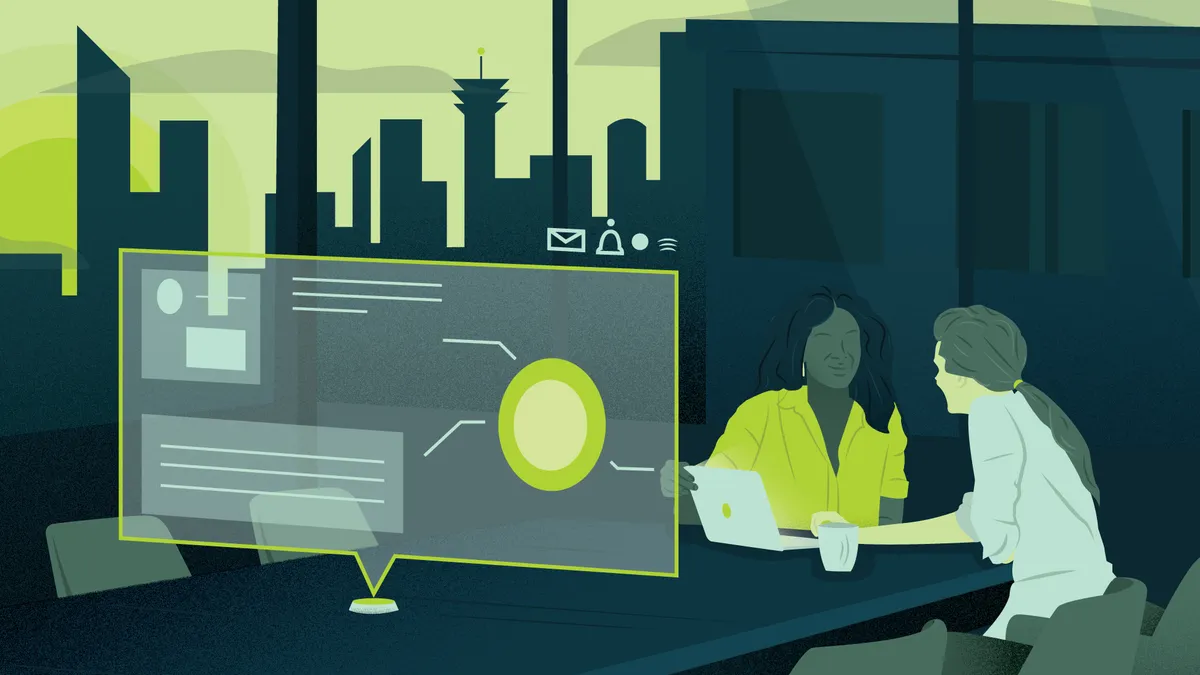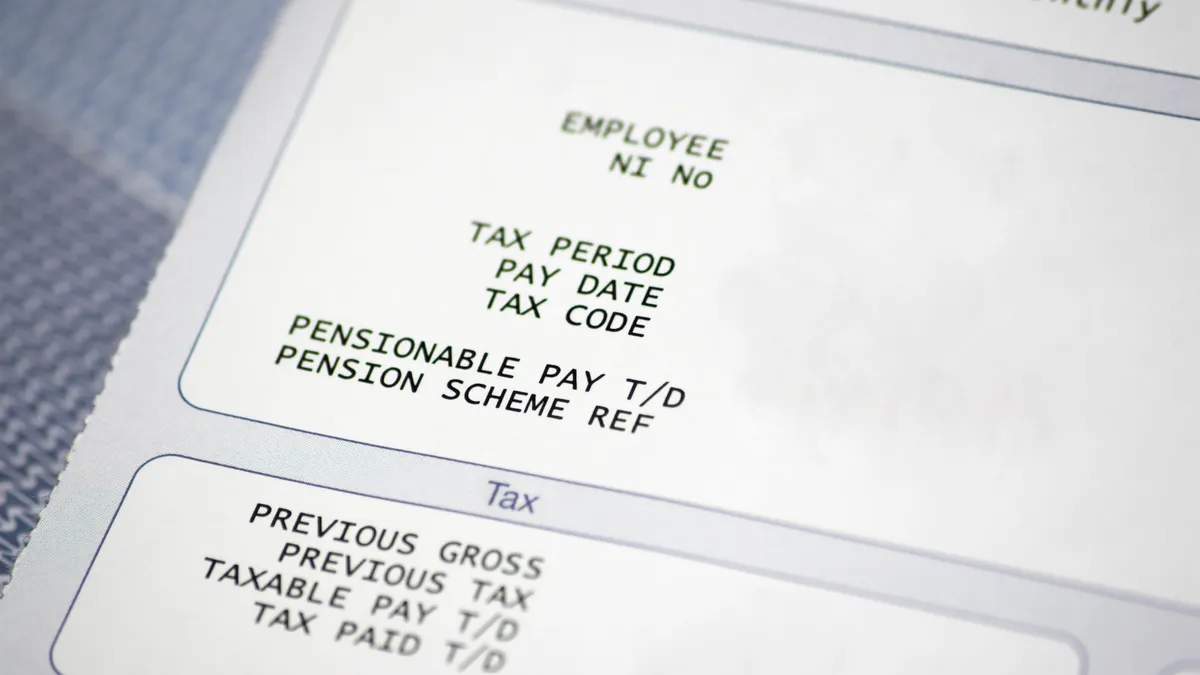A delicate tension exists in bimodal organizations. Though supported by and reliant on legacy technology, companies are prioritizing investments in more modern, cloud-based technology.
"You've got to keep the lights on every day with your legacy ERP environments" while innovating in the consumer-facing, internet of things, and data and analytics realms, said Matt Meier, VP and CIO, North America, at Whirlpool Corporation, in an interview with CIO Dive. "That puts pressure on us every day as to how do you kind of divide and conquer."
More than 100 years old, Whirlpool has to contend with creating a future-ready workplace that marries consumer-like technology experiences employees have come to rely on and attracts a new generation of employee, which idealizes Silicon Valley-type workplaces. The challenge it faces is not unique.
The future of work combines two previously siloed aspects of a company: technology and culture. Workplaces are becoming more digital, collaborative and agile while traditional hierarchies are broken down and decisions are made at a company's edge.
Modernizing business now requires a culture and technology overhaul. Often portrayed as digital transformation, large incumbent organizations are figuring out how to stay competitive with the Airbnbs and Ubers of the world, Aaron Levie, co-founder and CEO of Box, told CIO Dive in an interview.
Box, in tandem with Workplace by Facebook and Okta, formed the Future of Work Council in May to address the challenges companies are, and will be, faced with. Geared toward IT and HR leaders, the council also includes large companies like American Express, NIKE, Eli Lilly and Whirlpool Corporation.
Understanding the business challenges of digital natives and incumbent organizations, the council plans to regularly meet to rethink culture and recruiting, the skills gap and the technology needed to support the workforce.
Coast to coast: The plight of the flyover states
When it comes to incumbent companies, Whirlpool may be ahead of the curve in terms of digital transformation. Within the last five years, the company began to invest in the physical workspace and technology that enables productivity.
Meier, who joined in Whirlpool in 2016, said the company wanted to create a space that could engage the existing workforce and remain attractive for the workforce of the future.
The physical transformation of the space, akin to Silicon Valley headquarters, makes Whirlpool stand out in its Southwest Michigan location, on the lake and an easy drive away from Chicago.
Though it is an engaging location with sports and the appeal of a traffic-less commute, recruiting can be a struggle because the company is up against a larger trend in the industry: people's preference for large, urban, coastal hubs.
The coastal preference, however, is becoming a dated priority. Technology worker distribution is undergoing a renovation. The U.S. workforce has historically flocked to the coast, but recent Comparably data shows new tech hubs like Atlanta, Baltimore, Boulder, Colorado, and Phoenix are tempting locales.
In particular, workers are looking for competitive salaries and a lower cost of living so earnings can go farther.
There's a growing demographic of "folks that are tired of living in a box with five roommates and spend[ing] an hour and a half in traffic," said Meier.
To help modernize, the company overhauled its workplace to create a more open environment, with standing desks and a floor plan free of executive offices and cubicles. Whirlpool also incorporated more user-friendly technologies to match.
For the last three years, the company has employed a cloud first strategy across operations and in productivity tools, Meier said. For example, Whirlpool runs the Google productivity suite, which helps with collaboration regionally and globally.
Workers have high expectations in terms of technology, which require IT organizations to adapt accordingly, according to Levie. Workers don't want to work in an environment mired in legacy tech while simultaneously using fluid technology in their personal lives from companies like Apple, Spotify and Google.
In response companies are working to create enterprise-grade tech pathways to allow workers to have better tools while maintaining compliance and keeping data secure, a principal concern to other members of the council, Levie said.
If you build it, they will come — and stay
With modern offices and a forward-looking technology strategy, Whirlpool is working to hone an environment to attract talent from around the country, a goal similar to other incumbent companies and members on the council.
Some companies are further ahead than others, ready to tackle culture after undergoing technical upgrades. But that's not the case for the majority of enterprises. Six in 10 organizations are only about half way through digital transformation efforts, according to research from IDG and IDC. Though those companies are making headway, they are still slow to achieve enterprise-wide transformation.
Slow transformation can limit a company's ability to recruit top talent; outdated technology can deter talent from joining an organization.
The war for core talent, particularly focused on technical stills, challenges companies to have a strong purpose and value proposition workers can engage with, said Deboleena Bose, VP of HR, North America at Whirlpool Corporation, in an interview with CIO Dive.
The "glamour" of the coasts can create issues when trying to recruit from colleges and universities, said Bose. So the value proposition cannot come from aesthetics and location alone — it has to rely on the kind of work Whirlpool does.
Whirlpool is a global company with household appliances consumers know and rely on, including the Whirlpool line of products, KitchenAid and Maytag.
"We have big, complex problems and we have the ability to touch billions of consumers through our products," Bose said. Whirlpool's challenge becomes identifying how to articulate to potential employees the impact and learning potential of their work.
Every company is looking for the best talent and Whirlpool has historically had a "bit of a chip on our shoulder" relative to location, said Meier. After meeting with other members of the council, Whirlpool's takeaway was the need to package workforce opportunities form a scale and impact standpoint.
"We have products in 75% of U.S. homes already," Meier said. "We're touching more consumers than arguably, almost any of the companies in the mix and we're doing some interesting things in terms of trying to make their lives better in the home. That's actually pretty compelling."






















